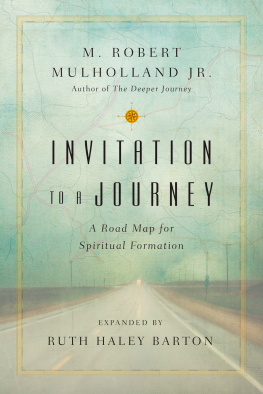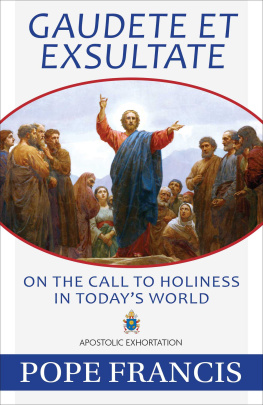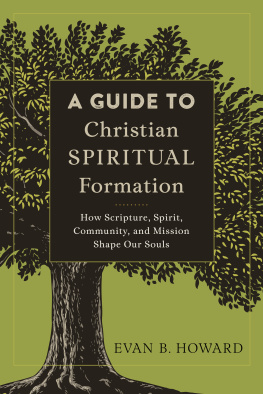


Copyright 1994
by Beacon Hill Press of Kansas City
ISBN 978-0-8341-1516-3
eISBN 978-0-8341-2758-6
Continuing Lay Training Unit 115.13B
Printed in the United States of America
Cover Design: Paul Franitza
Scripture quotations not otherwise noted are from the New Revised Standard Version (NRSV), copyright 1989, by the Division of Christian Education of the National Council of the Churches of Christ in the United States of America. Used by permission.
Permission to quote from other copyrighted versions of the Bible is acknowledged with appreciation:
The New English Bible (NEB), The Delegates of the Oxford University Press and The Syndics of the Cambridge University Press, 1961,1970.
The Holy Bible, New International Version (NIV). Copyright 1973, 1978,1984 by International Bible Society. Used by permission of Zondervan Publishing House. All rights reserved.
The New King james Version (NKJV), copyright 1979, 1980, 1982, Thomas Nelson, Inc., Publishers.
The Revised Standard Version of the Bible (RSV), copyrighted 1946, 1952, 1971, 1973.
The Good News Bible, Todays English Version (TEV)Old Testament American Bible Society, 1976; New Testament American Bible Society, 1966, 1971,1976.
The King James Version (KJV).
20 19 18 17 16 15 14 13 12 11
CONTENTS
PART I
FINDING THE PATH
PART II
FINDING RESOURCES FOR THE JOURNEY
PART III
FINDING COMPANIONS ON THE WAY
14. Wing to Wing and Oar to Oar:
Spiritual Friends and Faith Mentors
15. Together We Can Make It:
The New Look of Faith Mentors
PART IV
FINDING WAYS TO SERVE OTHERS
ON OUR JOURNEY
The Upward Call
Not that I have already attained,
or am already perfected;
but I press on,
that I may lay hold of that for which Christ Jesus has also laid hold of me.
Brethren, I do not count myself to have apprehended;
but one thing I do,
forgetting those things which are behind
and reaching forward
to those things which are ahead,
I press toward the goal
for the prize of the
upward call of God in Christ Jesus.
PHIL. 3:12-14, NJKV
This book is about a marriagea marriage between spiritual formation and the Wesleyan teaching of holiness. They have so much in common that a marriage is in order. Their compatibility centers in their mutual concern for holy living. For both, the standard is Christlikeness. There can be no other meaningful measurement for spiritual formation or sanctified living.
Wesleyan spirituality boldly proclaims that holiness of heart and life is available for every believer by way of sanctifying grace. Wesleyan spirituality clearly shows the believer the way to the highway of holiness. The method of Wesleyan discipleship is very effective, too, within and beyond its own borders.
In The Classics of Western Spirituality, Frank Whaling wrote, It is not so much that [Wesleyan] spirituality has been tried and found wanting. Certain elements of it have been tried and have borne fruit especially through the medium of the Methodist tradition. Even so, in its wholeness, the spirituality of the Wesleys has never been fully tried.
The essence of the Wesleyan doctrine of holiness has to do with the restoration of the image of God in humanity expressed in Christlikeness, and the goal of spiritual formation is to bring the believer to such Christlikeness that it is appropriate to speak of Christ being formed in the believers heart. This tradition is 2,000 years old, or at least as old as Pauls letter to the Galatians in which he wrote: My little children, with whom I am again in travail until Christ be formed in you! (Gal. 4:19, RSV, emphasis added).
The basic core of spiritual formation is an enabling relationship with God based upon grace alone. Spiritual formation occurs through a dynamic, growing relationship with God. The only norm or standard for measuring spiritual formation is Christlikeness.
Thus, these two, the Wesleyan doctrine of holiness and the teachings of the spiritual formation tradition, come now to be joined in holy matrimony on the pages of this bookat least that is the aim. It is hoped this book will help people answer the upward call of God in Christ, find the path to spiritual life, and persevere on the highway of holiness.
The authors of this book have studied a vast body of literature on spirituality. We have probed major works from every Christian century and almost every Christian generation. Dr. Weigelt and Dr. Freeborn teach spiritual formation at Nazarene Theological Seminary, in local churches, and at district retreats and conferences. Dr. Tracy is a specialist in Wesleyan spiritual theology. He has written, taught, and preached widely on this subject. Janine Tartaglia is a vigorous and successful minister of the gospel, a noted speaker, a devoted Christian. She brings a feminine approach to the task, along with her valuable experience in broadcast journalism and mass media communication.
Dr. Weigelt is primarily responsible for chaps. 15 and 10. Dr. Freeborn was the primary writer of chaps. 69. Janine Tartaglia wrote the last three chapters of the book. Dr. Tracy served as the leader of the writing team, editing the manuscript, and writing chaps. 1116. We tell you this so that when the authors use the first person in relating a personal experience, you can find out (if you care to) whose experience it was.
The pattern of the book presents the holy life as a journeyas indeed it is. Part I, Finding the Path, takes the reader through the beginning of the journey. Grace is the beginningatoning grace is brought about by the Lamb slain from the foundation of the world (Rev. 13:8, KJV); prevenient or preventing grace is that whereby every sinner is given the power to choose God and good when he or she hears the upward call.
We stress saving grace because, without clear Christian conversion, there is no possibility for spiritual formation. Sanctifying grace, one of the most precious jewels in the Wesleyan heritage, makes new dimensions of Christ-likeness possible. Apart from grace, there can be no spiritual formation or holy living. Apart from grace, the spiritual disciplines, however faithfully practiced, turn out to be the pathetic rags of self-righteousness.
Part II, Finding Resources for the Journey, explores the fundamental spiritual disciplines. We look at the foundational means of grace. Recognizing the creative and sustaining role of grace at every stage in the journey, we see the disciplines are the means by which grace flows into our lives for personal spiritual growth. Yet the focus remains on our relationship with God because the disciplines only provide the context in which grace is likely to function. We will present prayer, meditation, Bible study, spiritual reading, blessed subtractions, and journaling as avenues of grace. We will also explore what all this means in light of personality differences.
Part III, Finding Companions on the Way, teaches us that the holy life is a community affair. Christians in churches, classes, small groups, families, and in the roles of spiritual friends and faith mentors help each other on the highway of holiness.
Next page













